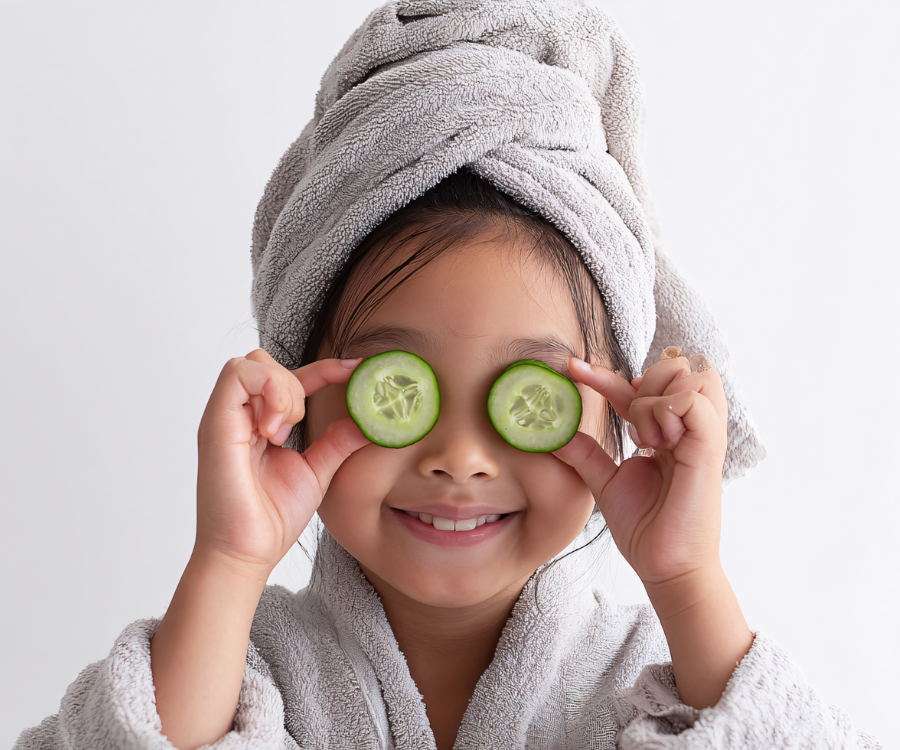As a parent, you’re constantly making decisions about what’s best for your child. When it comes to vision correction, the question of “Can my child wear contact lenses?” often comes up. While glasses are a tried-and-true solution, contacts offer freedom and convenience, especially for active kids.
The short answer is yes, children can wear contact lenses. In fact, eye care professionals often find that kids as young as eight years old can be successful contact lens wearers. The key isn’t a specific age, but rather a child’s maturity level and sense of responsibility.
The Right Age Isn’t a Number, It’s About Responsibility
While some very young children and even infants may be fitted with contacts for medical reasons (with parental help), for most kids, the decision to switch from glasses to contacts is based on their readiness. Here’s what to consider:
- Hygiene Habits: Do they wash their hands regularly and thoroughly without being told? Good hygiene is crucial for preventing eye infections.
- Following Instructions: Can they follow a set of steps carefully? Wearing and caring for contacts involves specific instructions for cleaning, storing, and wearing time.
- Maturity and Responsibility: Do they take good care of their belongings and remember their daily chores? A child who is generally responsible is more likely to be a good candidate for contact lens wear.
The Advantages of Contact Lenses for Kids
For many children, contacts offer significant benefits beyond just seeing clearly.
- Enhanced Vision: Contacts provide a full field of vision, which is a major advantage over glasses, especially for sports and other physical activities. They don’t fog up or get in the way.
- Boosted Confidence: Studies have shown that wearing contact lenses can improve a child’s self-perception and confidence, particularly for those who may feel self-conscious about wearing glasses.
- Myopia Control: For children with progressive nearsightedness (myopia), specific types of contact lenses are now available that have been clinically proven to slow the progression of the condition.
The Different Types of Lenses for Children
When you visit an eye doctor, they will recommend the best type of lens for your child based on their needs, prescription, and lifestyle.
- Daily Disposable Lenses: These are often the best choice for children. They are worn for one day and then thrown away. This eliminates the need for daily cleaning and storage, significantly reducing the risk of eye infections.
- Soft Lenses: These are the most common type of lens and are generally very comfortable to wear. They are made from a flexible, oxygen-permeable material.
- Rigid Gas Permeable (RGP) Lenses: While less common for new wearers, these can be a great option for certain prescriptions, especially for those with high astigmatism.
- Orthokeratology (Ortho-K) Lenses: These are special rigid lenses worn overnight to reshape the cornea. Your child can then see clearly during the day without any glasses or contacts. This can also be an effective method for myopia control.
The Parent’s Role: A Partnership in Eye Care
Even if your child is responsible, parental supervision is a key ingredient for success. You will need to be involved in the initial training and ongoing care to ensure your child practices proper hygiene and follows the optometrist’s instructions.
Here’s how to help:
- Be a Partner: Attend the initial contact lens assessment and training session with your child. Practice inserting and removing the lenses together.
- Maintain the Routine: Help your child get into the habit of daily lens care. For daily disposables, this means ensuring they throw away the old pair and start with a fresh one. For reusable lenses, it means supervising the cleaning and storage process.
- Have a Backup: Always have a pair of up-to-date glasses ready. In case of irritation or an infection, the contacts must be removed, and glasses worn until the issue is resolved.
- Watch for Red Flags: Teach your child to recognize symptoms of eye irritation or infection, such as redness, pain, blurred vision, or excessive watering. If they experience any of these, the lenses should be removed immediately.
Choosing to transition your child to contact lenses is a big step, but it’s a decision that can be empowering for them and beneficial for their vision and confidence. The most important first step is to schedule a comprehensive eye exam with an eye care professional who can assess your child’s specific needs and guide you through the process.

